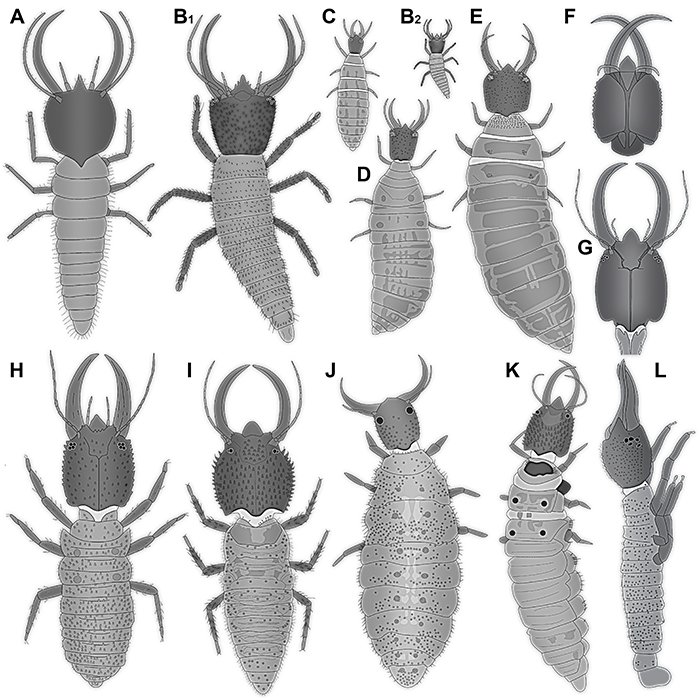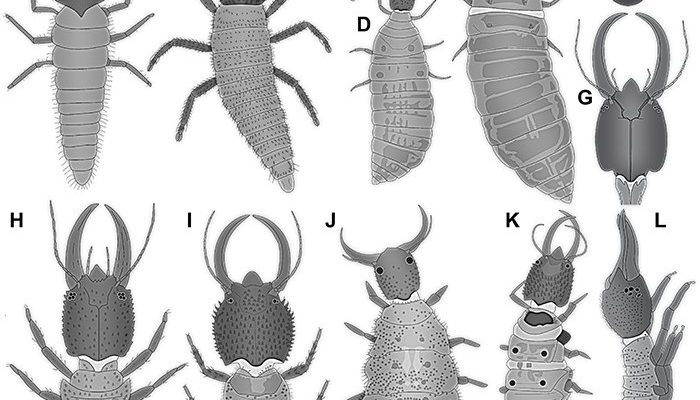
Ant lions are a part of the Neuroptera order, and their larvae are particularly known for their unique behavior and ecological significance. You could compare them to tiny, pointy-toothed vacuum cleaners, quietly pulling in unsuspecting ants and other small insects that happen to stumble into their cleverly crafted pitfall traps. Their presence indicates healthy ecosystems, yet many people are still unaware of where they can be found. So, let’s dive into the world of ant lion larvae and explore their documented range and distribution.
Understanding Ant Lion Larvae
Ant lion larvae might not be the first creature that comes to mind when you think about insects, but their lifestyles are as interesting as they are unique. These larvae, in their early life stages, are voracious predators that mainly feed on ants and other small insects. They typically live in sandy or loose soil environments, where they can easily create their infamous pits. You might be thinking, “What’s so special about making a pit?” Well, this trap is designed with precision.
The larvae dig conical pits in the ground, making them look like miniature bowls. When an unsuspecting ant falls in, the slippery walls make it hard for the ant to escape. The ant lion then waits, hidden at the bottom, ready to pull the ant into its grasp. This strategy is not just clever, it’s an efficient means of survival. The ant lion larvae’s hunting style has earned them a spot in nature’s fascinating lineup of predators.
Life Cycle of an Ant Lion
The life cycle of an ant lion consists of several stages: egg, larva, pupa, and adult. Each stage comes with its own set of characteristics and adaptations. The story starts when the female ant lion lays her eggs in suitable locations, which can be dry, sandy areas. After a few days, the eggs hatch into larvae, who quickly dig their traps.
During their larval stage—which can last several months to a couple of years depending on environmental conditions—they can consume a significant number of insects. Once they’re ready, they enter a pupal stage where they transform into adults. This metamorphosis is crucial for their survival as adults, which tend to have different needs and habitats compared to their larval counterparts.
Global Distribution of Ant Lion Larvae
Ant lion larvae are found worldwide, with a notable concentration in sandy, arid regions. While there are about 2,000 species of ant lions, their general presence can be broken down by continent and climate. You’d be surprised to learn that they thrive in environments ranging from temperate to tropical.
In North America, particularly in the southwestern United States, you’ll find various species native to desert ecosystems. Similarly, regions in Africa, particularly in the Saharan areas, also host a diverse range of ant lion larvae. In Europe, they appear in sandy habitats, often common in coastal areas. These creatures adapt well, so their presence can also be noted in less sandy terrains.
Habitat Preferences
The habitat of ant lion larvae is crucial for their survival. They prefer dry, sandy soils where they can easily dig their pits. This preference leads them to thrive in specific ecosystems, such as:
- Deserts
- Sandy beaches
- Dry grasslands
- Forested areas with sandy soil
These habitats not only provide a food source but also allow them to create effective traps. The type of soil plays an essential role in how well they can construct these pits. Interestingly, if the soil is too compact or not sandy enough, their hunting skills can suffer.
Ant Lion Larvae and Climate Influence
Climate plays an important role in the distribution of ant lion larvae. They are sensitive to temperature and moisture levels, meaning that changes in climate can significantly impact their populations. For instance, warmer temperatures can accelerate their life cycle, leading to quicker growth and reproduction.
On the flip side, unusually heavy rainfall can wash away their habitats or create conditions that are too wet for their survival. This makes them an intriguing species to study concerning climate change, as shifts in weather patterns may have serious implications for their future.
Ecological Role and Importance
Ant lion larvae play an important role in their ecosystems. They help maintain the balance of insect populations, primarily preying on ants, which can become pest species if left unchecked. By controlling these populations, ant lions contribute to the health of their habitats.
Moreover, they serve as a food source for other animals, creating a ripple effect in the food web. Birds and other insectivores often feed on adult ant lions, highlighting their importance beyond just their larval stage. Their unique life cycle and hunting methods make them a notable predator in their ecosystems.
Documenting Ant Lion Larvae Distribution
Scientists have been actively documenting the range and distribution of ant lion larvae through various means. Research studies and field surveys help in understanding where these creatures reside, their ecological roles, and how they adapt to different environments. Notably, collections of specimens in museums have aided in tracking changes over time.
Recent advancements in technology have made it easier to gather data, providing critical insights into their habitats. By mapping where these larvae are found, researchers can better assess their populations and the impacts of environmental changes. This information proves crucial for conservation efforts and understanding biodiversity.
The Future of Ant Lion Larvae
As our understanding of ant lion larvae grows, so does the importance of protecting their habitats. With their unique ecological role at stake, preserving the environments where they thrive becomes essential. Efforts in conservation and habitat restoration can help ensure that these amazing predators continue to flourish for generations to come.
Advocacy for sustainable practices in agriculture and development can also help minimize habitat disruptions. The more we learn about these fascinating creatures, the more we can appreciate their place in our world. We must work together to ensure their survival, which, in turn, supports the balance of insect populations and the health of ecosystems globally.
Ant lion larvae may be small, but their impact is significant. From their clever hunting techniques to their essential role in the ecosystem, these creatures deserve attention and appreciation. Their documented range and distribution give us valuable insights into their habitats and how climate and human activity affect their populations.
By understanding and protecting ant lion larvae, we not only preserve a unique part of our natural world but also contribute to the greater health of our ecosystems. So, the next time you find yourself on a sandy beach or in a dry forest, take a moment to think about the hidden lives of these fascinating predators. They’re out there, working quietly to maintain the delicate balance of life, and they could use our support to keep doing what they do best.

